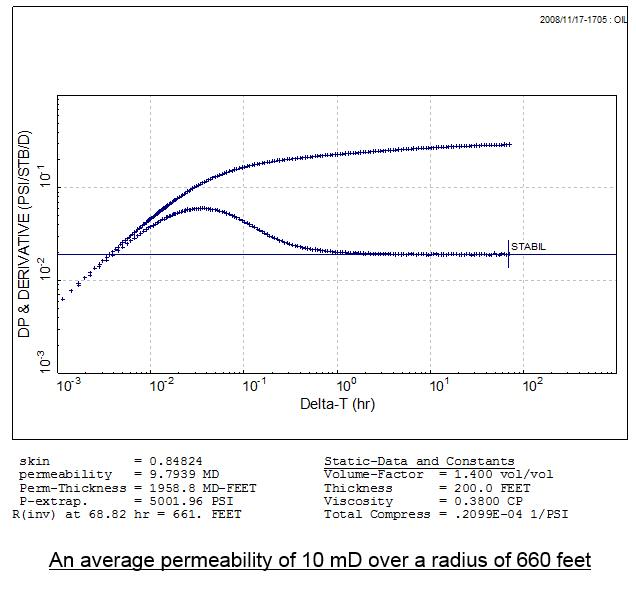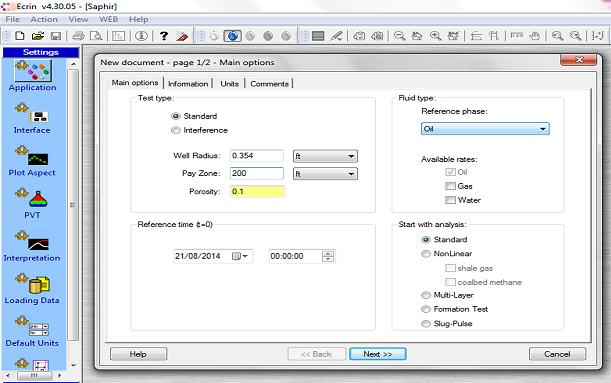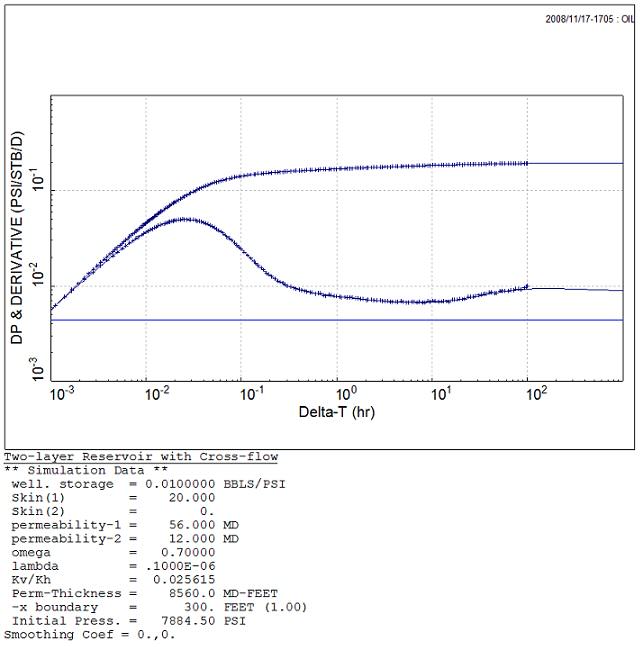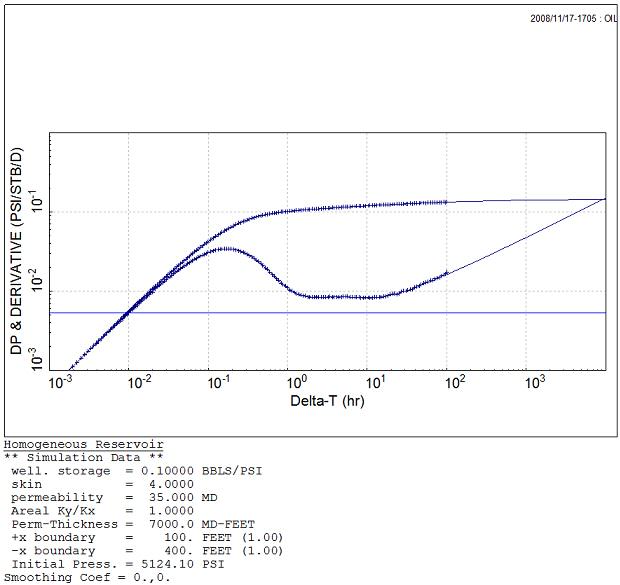Why is your PBU KH so different from the Core KH….?
Let it be clear, we are talking about large discrepancy. Otherwise don’t worry about it. Core (or log derived) KH is not the same as PBU KH from well test analysis. Don’t compare apples and oranges, both formation evaluation techniques do not measure the same thing over the same scale of investigation.
So what do we do when the KH difference is large ? The PBU analysis is not correct, right…?
Question the PBU analysis
Yes, we admit there could be an issue with the PBU analysis. There could be a lot of reasons for this: an error in static or PVT data, operations issues, data misinterpretation, wrong use of an interpretation model, wellbore phase redistribution (permanent downhole gauge lower than 200ft TVD from the perforations please!), an incorrect use of deconvolution, etc…
The first thing to check is the input data: static and PVT data, rate and pressure. We don’t directly obtain a permeability value from well test analysis but a mobility value KH/μ. So if the PVT is not correct, the viscosity µ won’t be correct, therefore KH. If the net reservoir stratigraphic thickness H is not correct, the permeability won’t be correct, etc… An error with the static and PVT data shouldn’t affect the selection of the interpretation model but the calculated well and reservoir parameters.
As we quality checked old well test interpretation studies, we have seen quite some horror stories, including simple errors with units. Meters instead of feet, degree F instead of degree C, fractional number instead of percent, rate in MMscfd instead of Mscf/d etc… Watch out for the units!
In PIE, saturation and porosity are input in percent % while the gas composition in fractional numbers.
In Saphir, saturation and porosity are input in fractional numbers while the gas composition in percent % by default.
Do you quality check the gauge pressure data with a gauge comparison study ? Are you confident about the pressure data? Does wellbore phase redistribution below the gauge create some artificial features that are mistakenly taken as flow regimes? What about the rate data ? Is it measured or allocated ? What meter are we using ? etc…
Let’s assume that we checked all the inputs (twice…), everything’s fine. Well perhaps the data may be misleading… Perhaps the radial flow regime (giving KH) is masked by wellbore storage, or perhaps near wellbore boundaries prevent the radial flow regime from developing. Perhaps you’re matching a “false” derivative stabilization, without knowing it.
A multilayer system with a non-uniform distribution of skin and KH per layer could create a “false” stabilization on the derivative. This could be misleading and result into an incorrect KH (this is also one of the reasons we should try to flow and test individual layer if possible). Discuss with your geologist and petrophysicist, and test some multilayer configurations.
If a boundary is very close to the well or if wellbore storage is large (slow shut-in, horizontal well, surface shut-in, etc), this could create a “false” derivative stabilization. Beware of a short stabilization at early times, this could create some large error in KH. And sometimes we may not see a near wellbore boundary on the seismic but it doesn’t mean that the boundary is not there.
Sometimes the well test analyst may simply misinterpret the data or choose a wrong interpretation model. Look at the superposition and data-plots, do they look matched? If not, find the reasons. By the way, if you don’t see these plots in the interpretation report, be suspicious… More on this in the well test analysis workflow and case study.
Still an issue
OK, we checked everything and we are quite confident about the well test analysis. There is still this discrepancy between the core and PBU KH. Should we be worried ?
Sometimes it is said that “a PBU KH is not real, it is not physical”. This may be because a well test analysis does not involve any fancy lab-experiment on a piece of rock. But actually, well test analysis is the only (dynamic) method to obtain an average KH over a large scale of investigation (up to kilometres…).
The log and core analysis looks at some few feet away from the well, and sometimes this zone is not representative of the reservoir hundreds feet from the well. Why ? Because of mud invasion, perhaps multiphase flow near wellbore, presence of natural fractures, presence of faults, etc… (the list is long). In this case, the core is not representative of the reservoir. In addition, the results of the core analysis depend on a lot of factors, including the core preservation and the type of lab test.
What to do ?
So if you find out that your KH from your analysis is way off what we have from the core. Then:
-
Review your analysis and check the input data.
-
Check for wellbore phase redistribution. Gauges close to the perforations will help (at less than 200ft TVD for a production well). In exploration and appraisal, place some gauges lower than 50 ft from the perfs and multiple gauges along the tubing.
-
Check for a “false” stabilization. Can you match the PBU derivative data with the core or log-derived KH adding a large wellbore storage or a boundary very near the wellbore? Could you match the derivative using a multilayer reservoir model with the core KH values but a non-uniform skin distribution ? If you can, that still doesn’t mean that this is the right solution, it is just one more solution that can match the dynamic data. If you can match the data with other KH values which are very different from the core KH, then these are also solutions.
-
Did you investigate Deconvolution ? This well testing technique will help you to spot a “false” stabilization on the conventional derivative and better understand the pressure transient response.
-
Could it be that you didn’t use the right interpretation model ?







Perhaps I could add a comment to include in the forum concerning differences between well-test kh and core kh. I have come across this on several occasions in the past. It tends to lead to heavy discussions with no apparent agreement except there is something amiss. And the result is an inevitable weakening of the perceived value of the test
After validating the test data, the test analysis and, of course, the core data as the forum describes, I argue it is essential to consider the geology. This determines how the core perms should be averaged (arithmetic, geometric or harmonic) to get a global perm that reflects the fluid flow into the wellbore as measured by the test.
An excellent example is given in the AFES presentation – available, at no cost, on the Internet – by Patrick Corbett et al: Basic Concepts in Well Testing for Reservoir Description (Slides 36-43). In this example, 2 wells, over their productive intervals, have about the same core perm averages and perm distributions. However, the perms calculated from the well tests differ markedly. The reason is that one well penetrates small inter-fluvial channels; the second well cuts through a much larger incised valley.
David Tipping
Reservoir Engineer / Field Management Advisor
Thanks David, this is a great comment.
http://archives.datapages.com/data/bulletns/2000/12dec/1929/1929.htm?doi=10.1306%2F8626C72B-173B-11D7-8645000102C1865D
Tengo el texto en full…just food for thought…